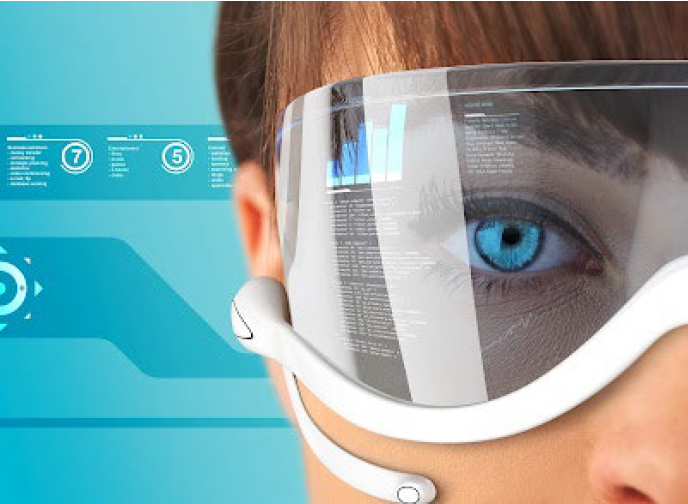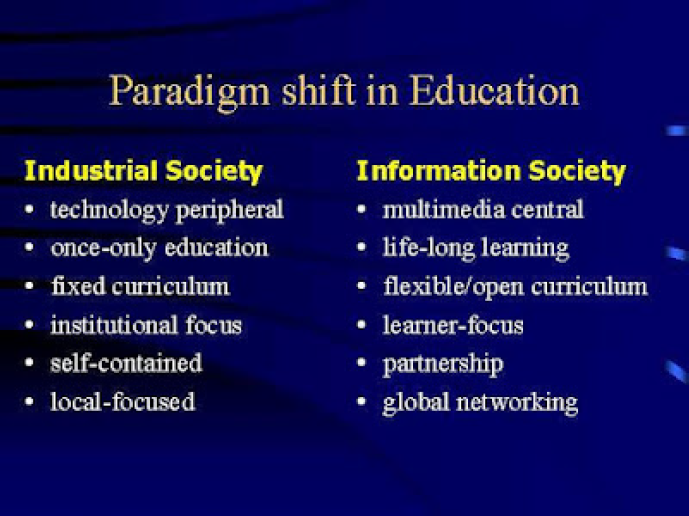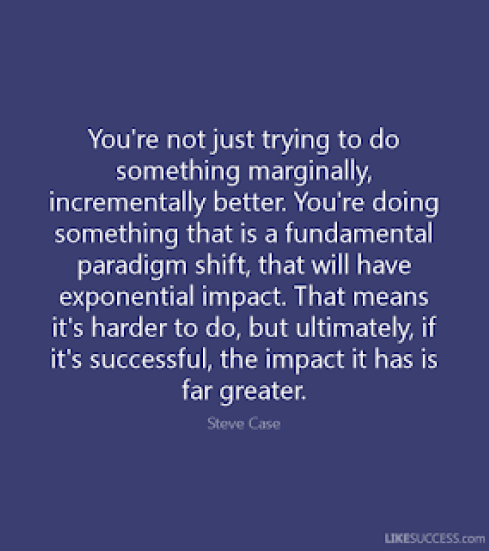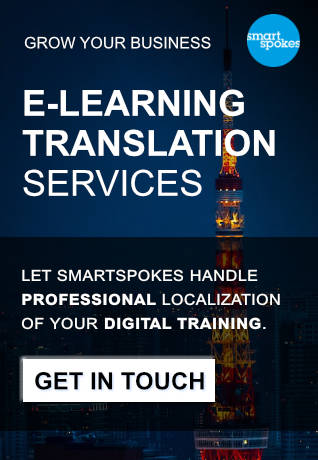With the frenzied introduction and daily updates on new technologies, sometimes it is good to step back and dare to take time off the grid. There is a time-honoured practice peculiar to our species that distinguishes us from other species – the human capacity for reflection. This is very often the catalyst for the development of vision and insights that normally would not present themselves. So, being an explorer and innovator at heart, I took those steps and went off the grid. I would have to admit it wasn’t totally off the grid since I did respond to postings found on LinkedIn.
When considering the challenge of adapting new technologies to serve e-learning, we must first describe what we would like e-learning to look like, either within the context of the business culture or within the context of the education culture.

Desirable Characteristics for E-Learning
1. Based Upon a New Paradigm and New Vision
We need to embrace a new vision for e-learning specifically and education in general are more in sync with the needs of societies that are globally connected and share very common, complex problems. We need to educate learners in such a way that, collaboratively with others, these learners may be effective agents of change who see people as a global community and may use the resources available to them to produce innovative and workable solutions. The previous paradigm, which is still in force, is not designed to nurture the skillsets needed to produce effective agents of change. What it does is that it maintains all the divisions that rob societies of being able to promise the hope of a better quality of life for their children, regardless of their socioeconomic status. What is required is a paradigm shift.


Paradigm shifts are, by their very nature, disruptive and, as a result, will be difficult to achieve.


2. The Learning Design
The thinking used in creating learning experiences must make use of the principles of design thinking. It must focus on creating learning experiences that are experiential, collaborative, problem-focused, and tied to real-world outcomes. Learning experiences that result in collaborative, innovative solutions to complex real-world problems must not stop at the walls of the classroom but should flow through a conduit to professional communities where they can receive feedback and promote discussion. Relevance and personal meaning for the learner are found in being able to receive feedback on their work from those on the leading edge of their respective disciplines. The ROI will grow on more than one level for both the professional community and the learners themselves.
3. Fostering Critical and Creative Thinking
Creativity in the old paradigm was never really given the priority that was needed, and critical thinking was promoted but within certain boundaries. In a world where information and knowledge are increasing exponentially, we can no longer allow creativity to wither in the hearts and minds of learners. Critical thinking is not an adversary to creativity. In this age, they need to be perceived as complementary and crucial in solving complex real-world problems. To maintain the status quo that exists in a paradigm that no longer serves our greatest need is a recipe for disaster on a global scale.
4. Fostering the Creation of New Knowledge and Skillsets
As part of the new paradigm, we need to design learning experiences that systemically present and reinforce the skillsets required to fulfill this function. Too much of the past approach emphasizes unbridled consumerism at the cost of being societies that created new skillsets and knowledge. The obvious question is:
“If you say that knowledge and information are growing exponentially, then are we not overproducing new knowledge and skillsets?”


The answer to that question is to re-examine our vision. What are our motives for the production of new knowledge and skillsets, or what are the drivers for this? If the drivers are still tied to the old paradigm, which sought to educate learners to be lifelong consumers and to live to accumulate things as the defining factors of our lives, then we are still reinforcing a dated paradigm and cannot effectively move forward.
5. Fostering Effective Habits of the Mind
The fact that e-learning takes place in an online world means that we need to educate learners to handle this new reality. It is not about the memorization of content and then regurgitating of that content on a one-shot exam, only to be forgotten a few days later. What it is about is engaging a connected generation to develop the necessary skills to analyze, synthesize, evaluate, and create in an ocean of information (valid or invalid) and knowledge (supported or unsupported) and be able to actively contribute to powerful and important real-world discussions in meaningful, life-changing ways. The old paradigm did not encourage this, and the fact that education systems are still following it is one of the reasons the new connected generation is disconnecting from their education at an alarming rate.
We need to have real conversations not only with all those who are stakeholders in the future of education but with everybody who has a stake in an enriching and viable future. In order to do that, we need to share such simple posts as mine with everyone you can think of who would like to be part of this conversation. Share this on social media, such as Facebook, Twitter/X or choose your favourite social media outlet. The rise of new technologies such as generative AI has added a whole new dimension to the pursuit of the development of “e-learning communities,” which will be looked at later in this series of articles.
Going off the grid was helpful for me to step back and look at the beautiful forest that the future of education could be instead of obsessively focusing on just one tree. Share this post, talk about it, and challenge it. In doing so, I can tell that you care about this passion of mine.



